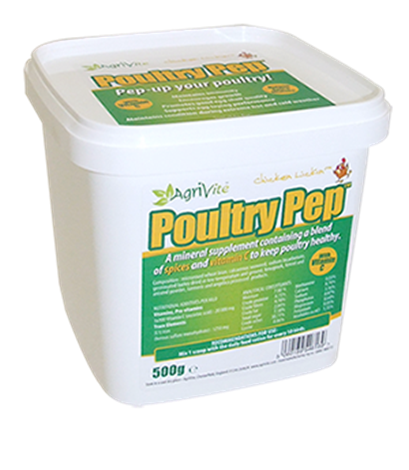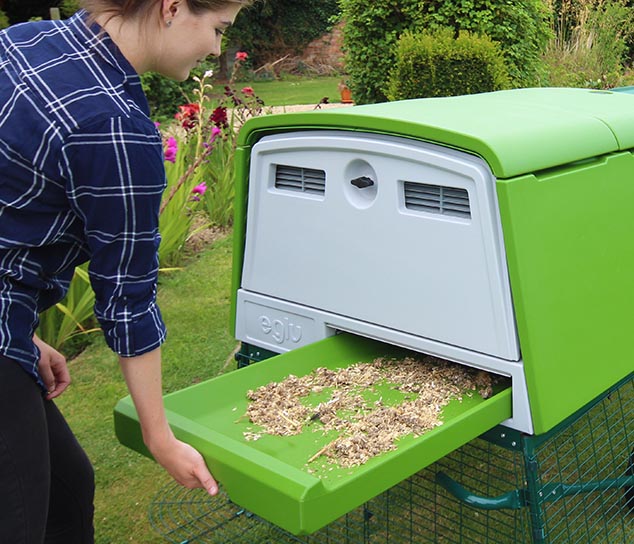Take a Peek in your Chicken Coop 👀
Saturday, May 20, 2017
Good coop maintenance is the key to having happy, healthy hens
Red mites are a very common poultry nuisance appearing each season usually in the warmer summer months. They eventually come to all poultry lovers and test our tenacity and chook keeping sanity. These nasty little critters might be lingering in the wood work of your hen house all winter if you do not take action now. Autumn/winter is the best time to deal to them plus it is the perfect time to disinfect and sanitise all surfaces in your coop killing any unwanted micro-organisms, bacteria and viruses. Your annual 'Spring Clean' will ensure you start the new season mite free with a clean house and all chickens in good health.
We have had great feedback this season on the Poultry Safeguard. It does a great job dealing to mites and best of all is NZ made and economical to use. For best results please follow the instructions carefully as the breeding cycle of the mite is key to getting on top of them. Repeat spray every 5 to 7 days till numbers are barely there. Follow up with Appletons De-Mite Powder for residual control.

This time of year, we regularly get asked about feather loss and drop in egg production.
Feather Loss
When a chicken is about a year old she will start to lose her feathers but don't panic, this is meant to happen. She is moulting. This is a completely harmless process of plumage rejuvenation. Just as your chickens have individual personalities, they will go through moult differently as well. Some lose a few feathers and grow them back in as quickly as 3-4 weeks. Other chickens lose a lot of feathers and take 12-16 weeks to grow them back. The new feathers are noticeably fresh and new. Please note moulting is an annual event usually taking place each year between January and May. Make sure the birds are well fed during this period as it takes a lot of energy (and much needed animal proteins) to grow new feathers. Because of all the energy taken up with moulting, your chickens will stop laying until their new feathers have grown. It is also during this time that the pecking order can change within your flock as moulting can be very stressful on a bird. It is also important to remember not to clip your chickens wings when they are moulting.
So best practice to feed your laying hens (all year round!) a premium complete layer feed with high levels of naturally occuring animal proteins. We recommend Weston Free Range Layer or Peak Layer pellets. Topflite Mealworms are a fantastic treat for your chooks that contains 50% minimum crude protein. Excellent for growing new feathers. Try Nettex Poultry Egg and Sheel Support. It is a complete nutritional boost, ideal for laying hens resulting in faster moults, good egg quality and healthier, stronger birds.
Why Are My Chickens Losing Feathers?Drop in Egg Production
Once pullets reach point of lay they will soon start to lay eggs. How long this takes depends on the time of year and the individual chicken (longer in winter when there is less daylight). Once they are laying though, they may not always produce eggs like clockwork, the reasons could be:
- When your chickens moult their egg production will drop and most likely stop.
- If your birds have had a fright this can result in no eggs for a while.
- Moving birds to a new home or hen house will cause a drop-in egg production.
- Egg production is the first thing affected by dehydration. Make sure your birds have plentiful clean water.
- If you are letting your chickens roam about in the garden they may have made a nest under a bush or in a corner somewhere. Follow your chicken discreetly to find the nest, sneaky but necessary!
- Mites in the hen house sucking the blood of your birds and making them anemic will reduce egg production.
- As birds get older they lay less and less eggs.
- Sick birds do not usually lay - hens need to be in good physical health to reproduce.
- Or you could have an Egg Thief? Four legged (rat, stoat, possum, hedgehog) or two legged (pukeko, weka, human)!!!

Dried Mealworms
Dried mealworms provide vital animal proteins to your poultry. A high protein snack!
Shop Mealworms
Mineral Boost with Probiotic & Seaweed
Net-tex Mineral Boost with Probiotic and Seaweed is a complete nutritional diet, ideal for a complete laying hen and resulting in faster moults, good egg quality and healthier, stronger birds.
Shop Nettex
Westons Layer Pellets
Premium quality feed for laying hens. A complete nutritional pellet for top quality egg production. Westons uses naturally occuring animal proteins in their feed unlike most other brands that only use synthetic proteins. Bags weight is also 25kg! Most if not all other poultry feed is now 20kg.
Shop Westons
Agrivite Poultry Pep
Poultry Pep is a tasty aromatic blend of minerals, spices and vitamin C that has a whole host of benefits to help support all round condition and encourage birds to eat their ration
Shop Poultry Pep
The Omlet Eglu Chicken Coop Range is a fantastic range of Chicken Coops if you are looking for easy care poultry accommodation that requires less maintenance than timber housing. These easy to clean plastic coops make light work of coop maintenance. No poultry spray required just a light water blast and walk away! Worth the investment.
Omlet Chicken Coops
The Eglu is quick and easy to clean with a slide out tray for collecting droppings and a large door at the back which allows easy access to the roosting bars and nesting area. Simply slide the droppings tray out and empty into the compost bin. The Eglu’s smooth plastic surfaces can be washed with a hose. Unlike wooden housing, you do not need to spray your Eglu.


